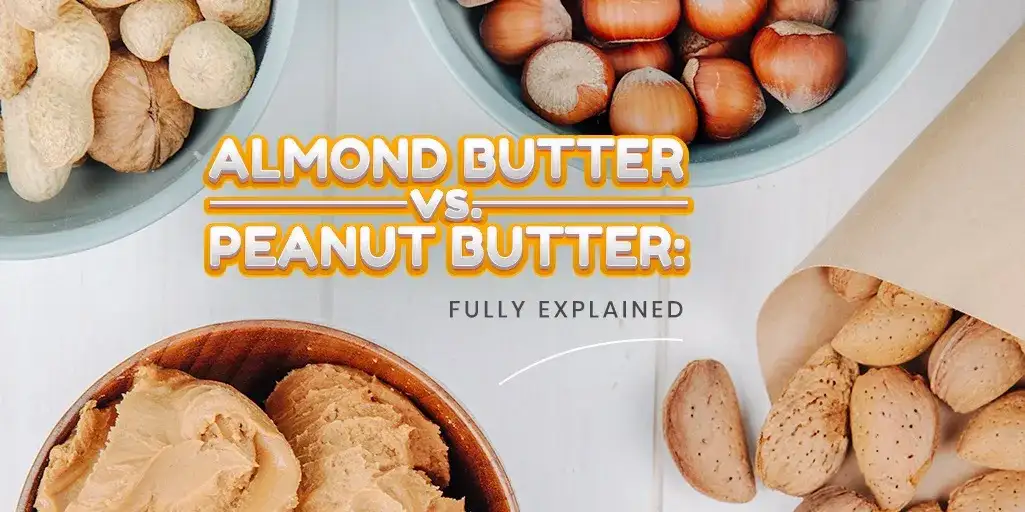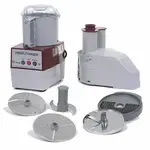
Almond Butter vs. Peanut Butter: Fully Explained
High in minerals, proteins, fiber, and healthy fats, nuts are one of the most nutritious snacks; nut butter is no exception. Almond butter, though a very new breakthrough nut butter, quickly gained popularity because of people’s love for good fat. Since its popularity, the classic pantry staple, peanut butter, appears to have lost its own. How can one know which nut butter is healthier than the other?
What Is the Difference between Almond Butter and Peanut Butter?
Almond butter is made by blending almonds at high speed until they have a creamy spread-like consistency. Store-bought almond butter can be expensive. It is easy and affordable to make a fresh batch of almond butter from scratch; all you need is fresh almonds and a good quality high-speed blender or a food processor.
Peanut butter is prepared by dry-roasting peanuts and blending them until they release oil and become a paste. Peanut butter is affordable and widely available in the market. Most store-bought peanut butter has preservatives, additives, and sugar.
While on the topic, here is a fun fact:
Did you know that peanuts are part of the legume family? Consider them cousins to lentils and beans. Unlike tree nuts like almonds or cashews, peanuts grow below the ground (like garlic) and flowers above the ground.
How to Make Almond Butter
Once you try our almond butter recipe, you will never want store-bought almond butter again! As long as you have a reliable food processor or blender, time, and perseverance, making almond butter is simple. For your almonds to reach a creamy texture, you must blend it for a longer time. Mediocre blenders can get damaged due to the heat of the continuous cycle. Check out CKitchen’s collection of quality food processors and blenders on our website for the best in the business.
Steps:
1) Roast 2 cups of almonds in the oven at 350ºF degrees for 10 minutes.
2) Transfer the roasted almonds to a blender or a food processor and blend until creamy. This process will take at least 20 minutes.
3) Scrape down the sides and blend it again for 10 minutes.
4) Once you have achieved the perfect consistency, transfer the almond butter to a jar. You can use commercial refrigerators to refrigerate it for longer shelf life.
5) Additionally, you can flavor the almond butter with cocoa powder, salt, salted caramel, blueberry flavoring, apple pie flavoring, etc.
How to Make Peanut Butter
Peanut butter is easy to make. Get smooth, rich, and creamy butter following these steps.
Steps:
1) Dry roast the peanuts in a pan or in the oven at 350ºF degrees for 10 minutes.
2) Place the roasted peanuts in a food processor and blend them every 1 minute. Scrape down the sides and repeat the process until required consistency. This process will take at least 10 minutes.
3) Blend the paste for ten more minutes if you need smooth peanut butter. Do not add oil to the mixture. It may take time, but peanut butter will release oil and give you a smoother consistency.
4) If you have not added any flavoring to the peanut butter, you do not need to refrigerate it. You can add maple syrup, date syrup, cocoa powder, vanilla essence, and other flavorings to the peanut butter.
These foolproof recipes are used by professional chefs around the world. Be sure to refrigerate your nut butter to increase its shelf life. Check out CKitchen's collection of reach-in refrigerators for all your commercial refrigeration needs.
Storing Almond Butter and Peanut Butter
Freshly-made peanut and almond butter should ideally be kept in a cool, dark place or a refrigerator. Store-bought peanut butter is much thicker than the natural version and uses preservatives. If refrigerated, it can harden, making it difficult to use.
Almond Butter vs. Peanut Butter: Texture Comparison
While almond butter is typically slightly grainy and runny, making it easy to drizzle on salads, peanut butter has a thick creamy texture. These nut butters add nutrition to your food despite their predominant textures and tastes. Peanut and almond butter can be used with both crunchy and smooth textures, depending on your liking. You can spread them on toasts, mix them in porridge, drizzle them on fruits and vegetables, or use them as dips. The distinct taste of peanut butter has helped in the creation of many trending drinks and ice creams with its flavoring.
Almond Butter vs. Peanut Butter Nutritional Comparison
Here is a detailed analysis of the nutritional composition of almond butter vs. peanut butter according to the USDA:
Almond Butter (Nutrition per 1 Tbsp or 16 g)
Calories: 98 calories
Fat: 8.9 g
Carbohydrate: 3 g
Fiber: 1.7 g
Sugar: 1 g
Protein: 3.4 g
Magnesium: 44.6 mg
Calcium: 55.5 mg
Peanut Butter (Nutrition per 1 Tbsp or 16 g)
Calories: 96 calories
Fat: 8.2 g
Carbohydrate: 3.6 g
Fiber: 1 g
Sugar: 1.7 g
Protein: 3.6 g
Magnesium: 26.9 mg
Calcium: 7.9 mg
Analyzing this nutritional data, we have come to the conclusion that both nut butters are equally nutritious and rich in minerals and vitamins. Almond butter contains extra vitamins, minerals, and fiber, while peanut butter is protein-rich due to its connection to legumes. Both nut butters have similar carbohydrates, sugar, and calories. Another important nutritional factor in peanut butter vs. almond butter is that the latter contains plenty of monounsaturated fatty acids, iron, magnesium, and calcium compared to the former.
Peanut butter and almond butter are both nutritious. While peanut butter contains slightly lesser nutrients than almonds, it is still high in lipids, fiber, and protein and, most importantly, does not make a hole in your pocket.
Almond Butter vs. Peanut Butter: Allergies Comparison
The peanut, belonging to the legumes family, is one of the highest allergens among adults and children in the US. According to a 2018 article, peanut allergies affect 1.2% of adults and 2.5% of children in the US. It is estimated that 30% of people with peanut allergies are allergic to tree nuts like almonds, walnuts, etc. But a peanut allergy does not mean that you should avoid tree nuts or vice versa. If you own a restaurant, you must mention nut-free dishes on your menu. Cross-contamination in the kitchen can also cause allergies in customers. Check out CKitchen’s food preparation equipment, color-coded cutting boards, and other restaurant equipment for safe and healthy cooking.
Almond Butter vs. Peanut Butter Price Comparison
According to recent statistics, the United States produced more than 1.4 million metric tonnes of almonds in 2021–22. Have you thought of why almonds are so expensive? It takes an adult almond tree at least five years to bear fruit. Water-intensive almond crop is very challenging for farmers to maintain during the dry season. Since almond trees are huge, farmers cannot replace almonds with another crop to increase their income, and since peanut plants are smaller, farmers can rotate their crops much more easily with them. Peanuts also grow all around the world, unlike almonds. Lastly, making almond butter is a labor-intensive process. The final product is expensive because it requires labor and time to peel the almond skins, roast them, blanch them, and blend them to make the butter. The pricing of the products has nothing to do with the superior quality of the nuts.
How to use Almond Butter vs. Peanut Butter
Peanut butter and almond butter can be used in a variety of ways. Here are a few ways you can use these nut butters:
1) Make the perfect round fluffy pancakes and drizzle your choice of nut butter on top.
2) Overnight oats with cocoa powder, fruits, chia seeds, and peanut or almond butter is another great option.
3) Peanut butter or almond butter ice-cream trends will never end. Check out our favorite ice machines from CKitchen and start making these delicious ice-creams.
From savory peanut satay to almond butter cookies, the world is your oyster when it comes to this nut butter.
Almond Butter vs. Peanut Butter: Our Conclusion
Almond and peanut butter are equally healthy, have minimal differences, and can be part of your everyday diet. Depending on your lifestyle, dietary restrictions and allergies, and nutritional goals, you can choose from either nut butter. If you can consume both peanut and almond butter, you can make it fresh or choose butter that is gluten-free, salt-free, and sugar-free.

